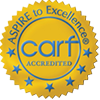As the days grow shorter and the temperatures begin to drop, many people notice changes in their mood and energy levels. For some, this shift goes beyond feeling “a little off”—it can lead to a more serious condition known as Seasonal Affective Disorder (SAD). This seasonal shift can be particularly challenging for those in addiction recovery, as the depressive symptoms associated with SAD can act as triggers for relapse.
In this blog post, we’ll explore what SAD is, who it can affect, its signs and symptoms, how it specifically impacts individuals with substance use disorders, and ways to combat it.
What Is Seasonal Affective Disorder (SAD)?
Seasonal Affective Disorder is a type of depression that occurs at specific times of the year, most commonly during the fall and winter months when daylight hours are shorter. SAD is linked to reduced exposure to sunlight, which affects the brain’s ability to regulate mood-related chemicals like serotonin and melatonin. For those with a history of addiction, this disruption in brain chemistry can further intensify cravings or the urge to self-medicate.
It’s essential for those in recovery to be aware of SAD and its symptoms, as untreated SAD can increase the risk of relapse by lowering mood, energy, and motivation—all of which play key roles in maintaining sobriety.
Who Can Be Affected by SAD?
SAD can affect anyone, but those in recovery from addiction may be particularly vulnerable. Substance use is often tied to emotional regulation, and many people use drugs or alcohol as a coping mechanism for depression or anxiety. The drop in mood caused by SAD may trigger old patterns of thinking or behavior, making it harder to stay on track in recovery. It’s important to recognize these seasonal mood changes and take steps to prevent them from interfering with the recovery process.
Certain groups are more susceptible to SAD, such as those living in regions with long winters and limited sunlight. Individuals with a history of depression, addiction, or bipolar disorder are at an even higher risk of experiencing seasonal mood changes, as are those who have low levels of vitamin D.
Signs and Symptoms of Seasonal Affective Disorder
The signs of SAD often mirror symptoms of major depression but tend to follow a seasonal pattern. Some of the most common symptoms include:
- Low energy or fatigue: Feeling constantly tired can sap the motivation needed to maintain daily routines that are crucial for recovery, such as attending meetings or practicing self-care.
- Changes in sleep patterns: Oversleeping or difficulty waking up can disrupt the structure and consistency often needed in recovery programs. A lack of routine may make it harder to resist triggers.
- Depressed mood: Persistent feelings of sadness, hopelessness, or worthlessness can lead to emotional relapse, where someone in recovery begins to feel detached from their goals or starts to justify the idea of using substances again.
- Increased cravings: The physical and emotional stress of SAD can exacerbate cravings, particularly for those who have used substances as a way to escape negative emotions.
Recognizing these symptoms is especially important for people in recovery, as managing mental health is a key component of long-term sobriety.
Ways to Combat Seasonal Affective Disorder, Especially in Recovery
While SAD can feel overwhelming, especially for those dealing with addiction, there are effective strategies to manage its effects:
- Light Therapy: Light therapy is a common treatment for SAD and can be especially helpful for those in recovery. Regular exposure to a lightbox can help stabilize mood and reduce the temptation to turn to substances to escape feelings of depression. Incorporating this into a daily routine can support both mental health and sobriety.
- Stay Active: Regular exercise can be incredibly beneficial for individuals in recovery, as it releases endorphins and reduces stress. Physical activity also helps combat fatigue and feelings of isolation that may accompany SAD. A daily walk outside, even in the cold, can provide a much-needed mental health boost.
- Maintain a Healthy Diet: Eating a balanced diet is important in addiction recovery, but even more so when combating SAD. The body’s craving for carbohydrates during the winter months can sometimes mimic cravings for substances. Being mindful of nutrition can help stabilize mood and energy levels, while vitamin D supplements can counteract the lack of sunlight.
- Stick to a Routine: Establishing a consistent daily routine is a core principle of addiction recovery, and it’s just as vital in managing SAD. A regular schedule helps maintain stability and structure, making it easier to avoid the emotional triggers that may lead to relapse.
- Seek Support: Isolation is a common symptom of both SAD and addiction, making it vital to maintain strong support networks during the winter months. Reaching out to support groups, sponsors, or therapists can provide encouragement and accountability, helping to prevent both emotional and physical relapse.
- Professional Help: For individuals struggling with severe symptoms of SAD, professional treatment is crucial. Therapy, particularly Cognitive Behavioral Therapy (CBT), is highly effective in managing both depression and addiction. Additionally, a healthcare provider may recommend antidepressant medications, which can also reduce the risk of relapse by improving mood and emotional stability.
Final Thoughts
For those in addiction recovery, managing Seasonal Affective Disorder is not just about addressing symptoms of depression—it’s also about protecting sobriety and mental well-being. SAD can trigger emotional distress that puts recovery at risk, but understanding its effects and taking proactive steps can help maintain stability through the winter months.
Whether it’s incorporating light therapy, maintaining a routine, or seeking support, there are many ways to combat SAD while staying committed to recovery. Remember that you don’t have to navigate either journey alone—reach out for support when needed, and take steps to prioritize your mental health.
If you or someone you know is in recovery and struggling with SAD, there is hope. Support is available, and with the right strategies, it’s possible to manage both SAD and addiction and continue on the path to healing.
If you or someone you know is struggling, reach out to us through our website or call us at 984-200-2780.









